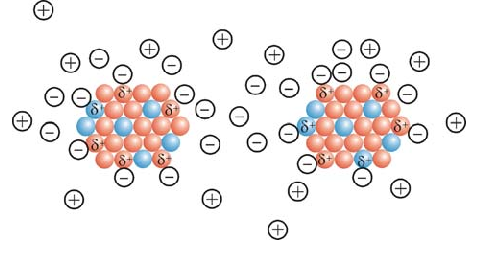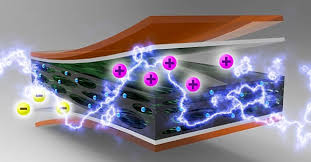A large specific surface High special level of nano graphene (Doctor of nano-micro-electronics)
Researcher and author: Dr. ( Afshin Rashid)
Note: Graphene nanoparticles are a suitable alternative to carbon nanotubes for the production of electronic nanostructures due to their high electrical properties as well as the abundance of their main constituent, graphite, in nature.
On the other hand, due to the unique properties of graphene, including nanoelectric , nanoelectrochemical and high specific surface properties , this material can be used in many applications such as sensors, nano-transistors, energy storage sources and various types of nano devices. Microelectronics has increased dramatically. Graphene has significant nanoelectronic properties including; High yang modulus; High fracture toughness , excellent nanoelectric conductivity, fast mobility of (nano loads) . There is a simple electrostatic interaction between graphene nanoparticles in a solution, graphene nanoparticles such as semiconductors, nanotransistors.
Graphene is fundamentally different from other two-dimensional or three-dimensional graphite materials in terms of building blocks, and other carbon geometric shapes, such as zero-dimensional spherical fullerene. Graphene is a single layer with one-dimensional carbon nanotubes of a hexagonal ring that can be superimposed on a flat aromatic pie structure (conjugate). The flat structure of graphene provides excellent capability for the application of this material in the field of transmission and electrostatic interaction in nanoelectric devices.
The application of graphene nano-strips in interfering electromagnetic nanomaterials and nano-electrostatic discharge in nanoelectronic devices to Rectenna nano-antennas, and nano-supercapacitors. The efficiency of graphene particles in the protection of interfering and reinforced nano-electromagnetic nanoparticles with modified graphene nano-strips is measured. One of the most important and new structures of carbon nanostructures is graphene. Graphene is a plate of carbon atoms. Graphene is the newest member of the large carbon family. The term graphene was used to describe a nano-layer of graphite. This nanomaterial has a high transparency due to its small thickness. Also, its conductivity has attracted a lot of attention. Controlling the conditions for separating a graphene monolayer is very difficult, usually matter A product called graphene consists of sets of several layers of graphene , each containing a different number of plates.
Conclusion:
The electrostatic interaction of graphene nanoparticles takes place at the molecular non-planar surface, and nano- graphene does not interact with the perfectly flat atomic structure. Graphene plates are flexible, that is , they bend, bend, or their surface becomes wavy. Large curves are related to the graphene preparation method, and small waves are an inherent property of isolated layers .
Researcher and author: Dr. ( Afshin Rashid)
PhD in Nano-Microelectronics





